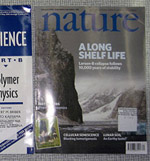Quantifying open space loss from urban sprawl
 Development,
Development,  Policy
Policy  A new housing development in San Jose, CA. Image credit, Sean O'Flaherty.A new study in the journal PLoS ONE finds that 1.4 million hectares of open space was lost to urban sprawl in the United States from 1990 - 2000.
A new housing development in San Jose, CA. Image credit, Sean O'Flaherty.A new study in the journal PLoS ONE finds that 1.4 million hectares of open space was lost to urban sprawl in the United States from 1990 - 2000.
Robert McDonald from the Nature Conservancy and fellow researchers conducted an analysis of land cover data to measure the amount of agricultural and natural areas converted to development across the 274 metropolitan areas of the country.
The researchers also looked at a number of interesting metrics related to land use and identified some trends that may help explain the sharp loss of open space.
Not surprisingly, they found that low-density neighborhoods, housing a small proportion of residents, make up the majority of developed areas in cities. This seems to get at the heart of the problem - extremely inefficient suburban and exurban land use. The authors write,
"This suggests that the preferences and economic choices of a relatively small number of urban residents are associated with much of the natural landcover lost to development. Efforts to increase the density of existing neighborhoods (i.e., densification) may reduce urban expansion somewhat, but our results suggest that the strength of this effect will be diminished because a relatively small proportion of urban residents still desire to live in a more suburban setting and choose housing accordingly."
The researchers found that per capita land consumption was generally lowest in big cities with the bottom five being: 1) New York; 2) Miami; 3) Philadelphia; 4) Los Angeles; and 5) Washington D.C Some may be surprised to see Los Angeles on the list given its overwhelmingly suburban pattern of development. This shows the suburbia does not necesarily equate low density.
The good news from the study is that land use per capita has generally decreased over the last decade with cities like Naples, FL and Las Vegas seeing big drops. The researchers found that cities with greater conservation funding or more progressive zoning tended to decrease in per capita land consumption more than other cities.
However, this correlation does not necessarily imply causation, and other factors may be at work. With this caveat stated, the authors hypothesize,
"Our results suggest that as cities protect land and tighten zoning restrictions, there is proportionally less development in more suburban areas, presumably because more dense residential development is comparatively favored by these actions. This then lowers the per-capita impact of urban residents on open space. "
 The change in per-capita land consumption from 1990 to 2000. Cities with negative numbers used less land per-capita in 2000 than in 1990, while cities with positive numbers used more land per-capita. Credit, PLoS ONE.
The change in per-capita land consumption from 1990 to 2000. Cities with negative numbers used less land per-capita in 2000 than in 1990, while cities with positive numbers used more land per-capita. Credit, PLoS ONE.
--Reviewed by Rob Goldstein
McDonald, R., Forman, R., & Kareiva, P. (2010). Open Space Loss and Land Inequality in United States' Cities, 1990–2000 PLoS ONE, 5 (3) DOI: 10.1371/journal.pone.0009509




Reader Comments